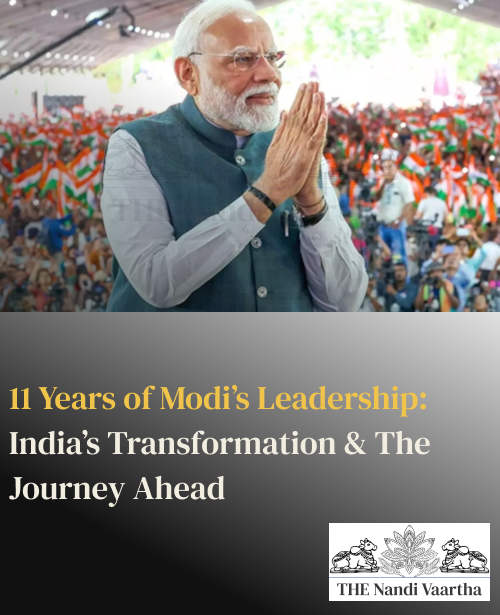This article dives into the milestones, transformations, and controversies that define Modi’s era—from 2014 to 2025.
Infrastructure Renaissance: Building Bharat Anew
Modi’s vision of “Vikas” (development) has been most visibly manifested in infrastructure. Highways have expanded at record pace, metro rail networks now snake through tier-2 cities, and projects like the Bharatmala and Sagarmala have revitalized logistics and port connectivity. The once-theoretical Bullet Train project moved from paper to construction. Airports have nearly doubled under the UDAN scheme, improving regional connectivity.
Key Stats:
- National highway length increased from ~91,000 km (2014) to over 1.45 lakh km (2024).
- 100+ new airports and heliports operationalized.
- India jumped in global logistics rankings due to digitization and port upgrades.
Digital India: The Silicon Backbone of Governance
Launched in 2015, the Digital India campaign has arguably been one of the most transformative pillars of Modi's governance. India now leads in digital payments, thanks to the UPI (Unified Payments Interface), while Aadhaar-based DBT (Direct Benefit Transfers) has streamlined welfare and reduced leakage.
Highlights:
- UPI sees over 11 billion transactions monthly (as of 2024).
- Over 90 crore people digitally authenticated for welfare schemes.
- The JAM Trinity (Jan Dhan-Aadhaar-Mobile) laid the foundation for inclusive fintech.
This tech leap helped India bypass traditional infrastructure in sectors like banking and telecom, directly empowering citizens through mobile governance (m-governance).
Welfare Schemes: From Gas Cylinders to Health Coverage
Welfare has remained a cornerstone of Modi’s electoral strength. Schemes like PM Ujjwala Yojana (free LPG connections), PM Awas Yojana (housing), Ayushman Bharat (world’s largest healthcare scheme), and Swachh Bharat Abhiyan (sanitation) have tangibly improved grassroots conditions.
Impact:
- Over 11 crore families received LPG connections.
- More than 4 crore houses constructed under PMAY.
- Ayushman Bharat has covered 50 crore beneficiaries.
These welfare pushes have been politically astute—targeting women, rural voters, and the underprivileged—turning them into loyal voter blocs.
Nationalism and Foreign Policy: Assertive India
Modi’s India has projected itself as bold and unapologetic. Be it the Balakot air strikes after Pulwama or hosting G20 in 2023, the message was clear—India is a rising global power. Strategic partnerships with the US, UAE, Japan, and Australia (Quad) signal a clear Indo-Pacific pivot.
His foreign diplomacy, however, is often fused with domestic posturing—where nationalism becomes both a foreign policy strategy and a domestic vote-winner.
Democratic Concerns and Polarization
Yet, Modi’s legacy is not without serious criticism. Critics cite a shrinking space for dissent, a tamed media, communal polarization, and the weakening of democratic institutions. The abrogation of Article 370, the CAA-NRC controversies, and growing attacks on minority voices have sparked global scrutiny.
Concerns Raised:
- India dropped in press freedom indices and democracy ratings.
- Dissenters, including activists and journalists, face increased surveillance and legal action.
- Opposition parties allege misuse of investigative agencies.
Economic Unevenness: Growth with Gaps
Despite India becoming the 5th largest economy and a startup powerhouse, income inequality has widened. Job creation hasn't matched the population growth. MSMEs suffered during demonetization and GST transitions, and the COVID-19 pandemic exposed vulnerabilities in health infrastructure and migrant welfare.
Economic Indicators (2024):
- GDP growth stable around 6-7%, yet unemployment remains a concern.
- Youth joblessness and agrarian distress persist.
- Corporate profits soar while rural distress deepens.
Final Word: A Legacy Still in the Making
PM Modi’s 11 years in power have undeniably reshaped India—its cities, its global perception, and its digital DNA. He has built new roads, launched new rockets, and inspired millions with a nationalist dream. But that same tenure has also triggered sharp debates on what kind of democracy India wishes to be.
Whether history remembers him as a transformative builder or a polarizing reformer will depend on what lies ahead. One thing is certain: Modi has redefined the Indian Prime Minister’s role from that of a statesman to that of a larger-than-life brand.

